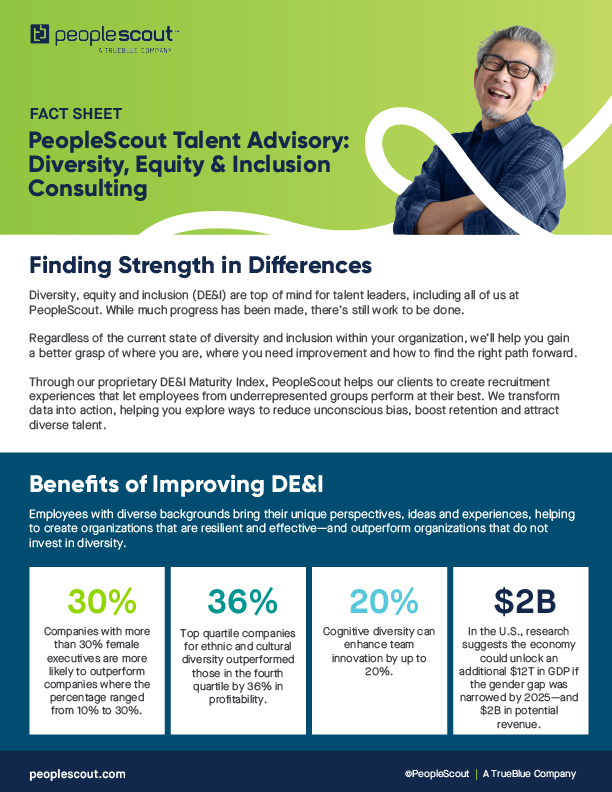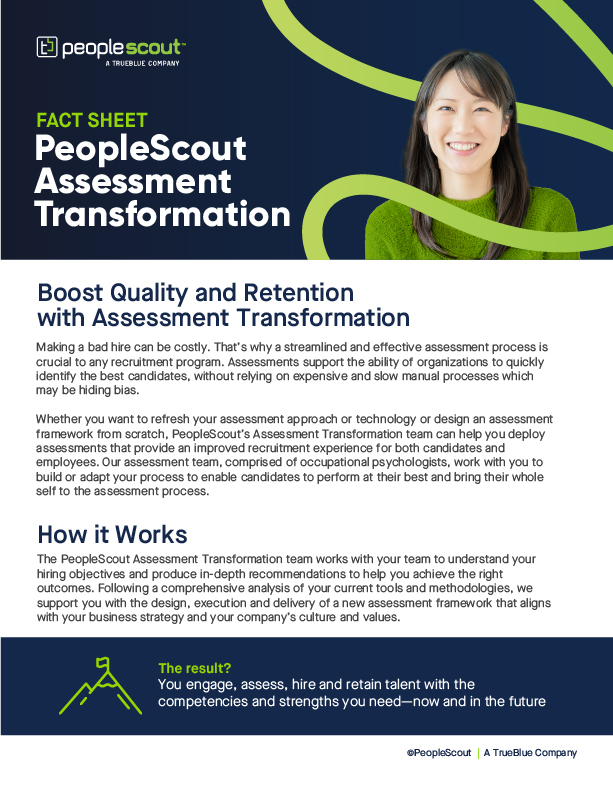
Situation
One of Australia’s largest development and construction companies had a graduate recruitment program consisted of a short burst of marketing and campus engagement (six weeks), two recruitment phases in March (16 weeks) and August (12 weeks) and a long “keep warm” period. This approach heavily impacted their HR and recruitment teams as well as a line manager resource. Plus, the long recruitment process and keep warm periods resulted in drop off or renege rates of up to 30%.
They engaged PeopleScout to help them create a more efficient graduate recruitment process, while ensuring they connected with bright emerging talent.
Solution
Seeking to strengthen the connection with students and to drive more efficiency, we executed an early careers talent solution that shifted the focus of the campaign—adding more meaningful campus engagement (24 weeks) and one short, sharp recruitment window (10 weeks).
Laying the Foundation
The first step PeopleScout took in updating the program was to conduct in-depth job analysis interviews with a variety of stakeholders including: high performing graduates and interns, their line managers and visionaries across the business. This allowed us to develop a robust success profile, which defined what good looks like now and into the future.
Then we reviewed and updated the early careers value proposition and updated the campaign materials to tap into candidates looking to build a purpose-driven career. We also tailored our approach to ensure we connected with the client’s target diversity groups.
We created an always-on expression-of-interest portal for the client which allowed us to build a talent pool for the whole academic year. With the Affinix™ Student Engagement Platform, we delivered tailored content and shared employee stories showcasing ‘a day in the life’ and career journeys. This helped us to drive interest and change minds about a career in construction and property by myth-busting common misperceptions.
Campus Engagement
Recognising the importance of genuine and authentic communication, we identified graduate ambassadors across the breadth of the business. Moving away from pure reliance on careers fairs and job boards, our campaign involved the delivery of 38 student engagement events, including site tours, “meet the team” sessions and panels with female leaders leveraging our ambassadors.
Recruitment Process & Candidate Assessment
Now, having driven engagement with the target student population, it was important that the recruitment process was also effective, efficient and engaging. Our client had been following the traditional path of online testing, group assessment centres and hiring manager interviews to deliver their graduate program. But there was opportunity to ensure the process amplified their brand, provided candidates a realistic job preview, and levelled the playing field for all, enabling candidates to demonstrate their potential.
Using the insights from the internal client stakeholder interviews during our discover phase, we implemented the following changes:
- Completely redesigned the assessment framework.
- Adopted a CV-blind approach which helped to reduce unconscious bias.
- Implemented a skills assessment in place of previous cognitive tests, which provided a more holistic view of the candidate, tapping into their motivation, cognitive strengths and behaviours, and measured the candidate against the client’s success profile.
- Provided candidates with meaningful feedback reports, giving candidates an overview of their strengths and areas for development.
- Revamped assessment centre exercises to bring the client’s construction project world to life, with candidates working together to deliver solutions involving the client’s core areas of focus, like community and sustainability.
- Used our virtual assessment centre technology to encourage participation, especially for working candidates, rural candidates or those unable to afford the travel who previously experienced barriers during in-person events.
- Leveraged our technology to improve accessibility for candidates with a disability and for those with ESL requirements.
Results
- Reduced time spent on recruitment activity from 28 weeks down to 10 weeks.
- Achieved client diversity targets, with 50% of graduates hired identifying as women (compared with 15% of graduates with construction and engineering degrees identifying as women) and 3% of graduates hired identifying as First Nations (compared with 1% of graduates with construction engineering degrees identifying as First Nations).
- Reduced candidate drop off and reneges from 30% to 14%.
“The process was very well run, and we had strong candidates. Thank you for the hard work and efforts with this program. It was a very thorough process with great results.”
Client Feedback
The enhanced engagement and innovative approach to assessment had an amazing impact on the client’s candidate Net Promoter Score (cNPS) with candidates rating their experience at 65, which is considered great. Candidate feedback was incredibly positive with a sample of feedback below:
- “Very modern and innovative approach to the regular interview process. Allows busy applicants to complete in their own time.”
- “The interview process was very innovative and provided additional insight into the role.”
- “Overall has been a great experience. The assessment provided me with feedback that I can take into account in the future.”
- “Very user friendly interface and didn’t feel demeaning or intimidating.”
- “Thank you for making it such a smooth application process. I really appreciated all of the support provided, and I’m looking forward to working in such a supportive work environment. I also really appreciated the quick turnaround time for my application.”
At a Glance
- COMPANY: Large development and construction company
- INDUSTRY: Building & Construction
- PEOPLESCOUT SOLUTIONS: Recruitment Process Outsourcing, Affinix


![[On-Demand] The Human Advantage: Redefining Employer Value Proposition for the New World of Work](https://www.peoplescout.com/wp-content/uploads/2023/11/PS-1265_The-Human-Advantage-Webinar-Promo-Materials_social_images-12-320x320.jpg)



![[On-Demand] Modular RPO: Amping Up Your Recruitment Strategy](https://www.peoplescout.com/wp-content/uploads/2023/09/PS-1219_Amplifiers-Webinar-promo-images-12-320x320.jpg)




